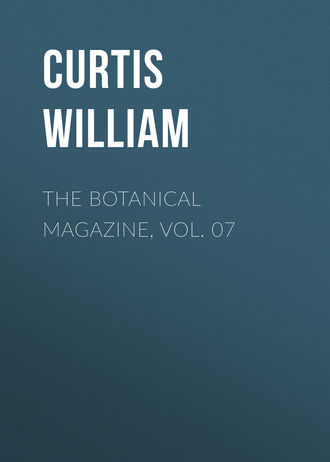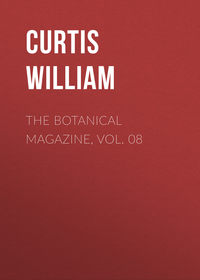 полная версия
полная версияThe Botanical Magazine, Vol. 07
Professor Jacquin is, we believe, the first author who has figured this species of Campanula, which he has done in his Hortus Vindebonensis; Linnæus the Son afterwards inserted it in his Suppl. Pl. assigning it the characters specified above in the synonyms, and expressing his doubts whether it was not a variety of the Campanula carpatica, already figured in this work, Pl. 117. Prof. Jacquin clearly demonstrates that it cannot be so, as it differs most essentially from that plant in a variety of particulars, vid. Linn. Syst. Veget. ed. 14. Murr. his specific description there given, agrees much better with the plants we have seen flower here, than that of Linnæus does, there being generally more than one flower on a stalk, and the leaves rarely growing three together.
The blossoms of this plant when it grows in perfection, are very large, nearly twice the size of those of the Campanula carpatica, whence its name of grandiflora; previous to their opening fully, they somewhat resemble an air balloon, from which circumstance it has been called by some the Balloon plant.
It is a hardy perennial, a native of Siberia and Tartary, and was introduced to this country by Mr. John Bell in the year 1782.
It flowers in July, is as yet a rare plant in this country, and likely to continue so, as it is not easily increased, multiplying but little by its roots, scarcely to be struck from cuttings, and rarely producing perfect seeds.
1
We once saw a specimen of a hen and chicken daisy gathered on a hill in Sussex, much inferior in size to the daisy as it usually grows.
2
Clayton in Gronov. Fl. Virg. says maddidis gaudet locis, it delights to grow in wet places.


